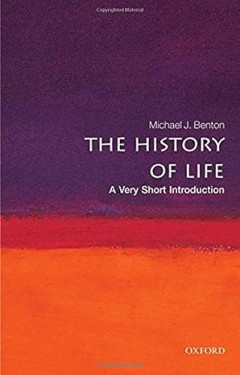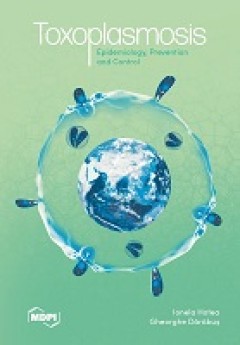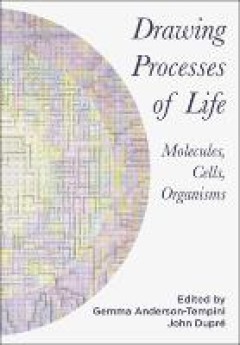Ditapis dengan
E-book Help Me Understand Genetics
Cells are the basic building blocks of all living things. The human body is composed of trillions of cells. They provide structure for the body, take in nutrients from food, convert those nutrients into energy, and carry out specialized functions. Cells also contain the body’s hereditary material and can make copies of themselves. Cells have many parts, each with a different function. Som…
- Edisi
- -
- ISBN/ISSN
- -
- Deskripsi Fisik
- 227 hlm
- Judul Seri
- -
- No. Panggil
- 576 MED h
E-book Biochemistry Review : Overview of Biomolecules
Biomolecules contain mainly carbon, which behaves as it always does in organic compounds, forming 4 bonds, usually with a tetrahedral arrangement. (PP 2) The carbon skeleton can be linear, branched, cyclic, or aromatic. Other important elements are H, O, N, P and S. About 30 elements are required by biological systems, including iodine and many metals, though most of these are needed in only tr…
- Edisi
- -
- ISBN/ISSN
- -
- Deskripsi Fisik
- 160 hlm
- Judul Seri
- -
- No. Panggil
- 572.8 LOU b
E-book Xenopus : From Basic Biology to Disease Models in the Genomic Era
Frogs have played so central a role in biological research that many people’s only memory of actual biological study involves dissecting one in high school. It’s no surprise, then, that frogs have been central to scientifc discovery for centuries. Marcello Malpighi had at least an inkling of the concept we now call “model organisms.” He repeatedly extolled the frog as an out…
- Edisi
- -
- ISBN/ISSN
- 9781003050230
- Deskripsi Fisik
- 361 hlm
- Judul Seri
- -
- No. Panggil
- 576 ABU x
E-book Animal Communication Theory: Information and Influence
The explanation of animal communication by means of concepts like information, meaning and reference is one of the central foundational issues in animal behaviour studies. This book explores these issues, revolving around questions such as: what is the nature of information? What theoretical roles does information play in animal communication studies? Is it justified to employ these concepts in…
- Edisi
- -
- ISBN/ISSN
- 9781604130904
- Deskripsi Fisik
- 121 halaman, ilus.
- Judul Seri
- -
- No. Panggil
- 591.3 STE a
E-book Researcher’s Guide to: GeneLab
NASA initiated GeneLab—a multiyear, multiphase project—on the premise that mining of omics data from spaceflight experiments offers an immense opportunity to understand the effects of spaceflight on biological systems. That progress can best be accomplished by ensuring access to these data to as many researchers as possible. GeneLab captures vast amounts of data from spaceflight and gro…
- Edisi
- -
- ISBN/ISSN
- -
- Deskripsi Fisik
- 26 halaman, ilus.
- Judul Seri
- -
- No. Panggil
- 576 NAS r

E-book The History of Life: A Very Short Introduction
Here is the extraordinary story of the unfolding of life on Earth, told by Michael J. Benton, a world-renowned authority on biodiversity. Ranging over four billion years, Benton weaves together the latest findings on fossils, earth history, evolutionary biology, and many other fields to highlight the great leaps that enabled life to evolve from microbe to human--big breakthroughs that made whol…
- Edisi
- -
- ISBN/ISSN
- 9780199226320
- Deskripsi Fisik
- 185 halaman
- Judul Seri
- -
- No. Panggil
- 599.93 BEN t 002834-eB-0122

E-book Genes: A Very Short Introduction
In this exploration of the concept of the gene, Jonathan Slack looks at the discovery, nature, and role of genes in both evolution and development. By explaining the nature of genetic variation in the human population, how hereditary factors were identified as molecules of DNA, and how certain specific mutations can lead to disease, Slack highlights how DNA variants are used to trace human ance…
- Edisi
- -
- ISBN/ISSN
- 9780191664182
- Deskripsi Fisik
- 254 halaman
- Judul Seri
- -
- No. Panggil
- 576 SLA g

E-Book Toxoplasmosis: Epidemiology, Prevention and Control
Scientific motivation to publish this book comes from the increased interest in the study of toxoplasmosis, showed all over the world. Though the Toxoplasma gondii infection was first discovered in 1908, toxoplasmosis remains a today's research topic, a realm of questions and dilemmas that interest both the veterinarians and the human doctors. Studies in the field are directed to the epidemiolo…
- Edisi
- -
- ISBN/ISSN
- 9783036526997
- Deskripsi Fisik
- 202 halaman
- Judul Seri
- -
- No. Panggil
- 572 HOT t

E-Book Drawing Processes of Life: Molecules, Cells, Organisms
How the challenge of depicting biological systems can generate productive questions for artists and scientists. An artist drawing cell division faces a problem: what is the best way to visually represent a dynamic process? This anthology, edited by an artist and a philosopher of science, explores drawing as a way of inquiring into living processes at the molecular, cellular, and organismal scal…
- Edisi
- -
- ISBN/ISSN
- 9781789387094
- Deskripsi Fisik
- 364 halaman
- Judul Seri
- -
- No. Panggil
- 572.8 AND d
E-book Evolutionary Genomics : Statistical and Computational Methods
The typical definition of the genome is often dualistic, referen-cing both structural features and its function to store and transmitbiological information [4]. For example, the US National Institutesof Health (NIH) uses the following definition: “A genome is anorganism’s complete set of DNA, including all of its genes. Eachgenome contains all of the information needed to build and main-tai…
- Edisi
- -
- ISBN/ISSN
- 9781493990740
- Deskripsi Fisik
- 777 hlm
- Judul Seri
- -
- No. Panggil
- 572.8 ALT e
E-book Patent Landscape Reoprt on Animal Genetic Resources
This patent landscape report provides an overview of international patent activity for animal genetic resources, in particular those relating to food and agriculture. The empirical analysis of patent activity for animal genetic resources for food and agriculture has received remarkably little attention in the scientific literature. Indeed, in conducting the present research we found no example …
- Edisi
- -
- ISBN/ISSN
- -
- Deskripsi Fisik
- 178 hlm
- Judul Seri
- -
- No. Panggil
- 591.3 OLD p
E-book Understanding Genetics
Understanding the underlying concepts of human genetics and the role of genes, behavior, and the environment will be important to appropriately collecting and applying genetic information and technologies during clinical care. This chapter provides some fundamental information about basic genetic concepts including cell structure, the molecular and biochemical basis of disease, major types of g…
- Edisi
- -
- ISBN/ISSN
- -
- Deskripsi Fisik
- 88 hlm
- Judul Seri
- -
- No. Panggil
- 576 BUR u
E-book Genetics and Molecular Biology
In this book we will be concerned with the basics of the macromolecular interactions that affect cellular processes. The basic tools for such studies are genetics, chemistry, and physics. For the most part, we will be concerned with understanding processes that occur within cells, such as DNA synthesis, protein synthesis, and regulation of gene activity. The initial studies of these processes u…
- Edisi
- 2nd ed.
- ISBN/ISSN
- 0801846749
- Deskripsi Fisik
- 715 hlm
- Judul Seri
- -
- No. Panggil
- 572.8 SCH g
 Karya Umum
Karya Umum  Filsafat
Filsafat  Agama
Agama  Ilmu-ilmu Sosial
Ilmu-ilmu Sosial  Bahasa
Bahasa  Ilmu-ilmu Murni
Ilmu-ilmu Murni  Ilmu-ilmu Terapan
Ilmu-ilmu Terapan  Kesenian, Hiburan, dan Olahraga
Kesenian, Hiburan, dan Olahraga  Kesusastraan
Kesusastraan  Geografi dan Sejarah
Geografi dan Sejarah